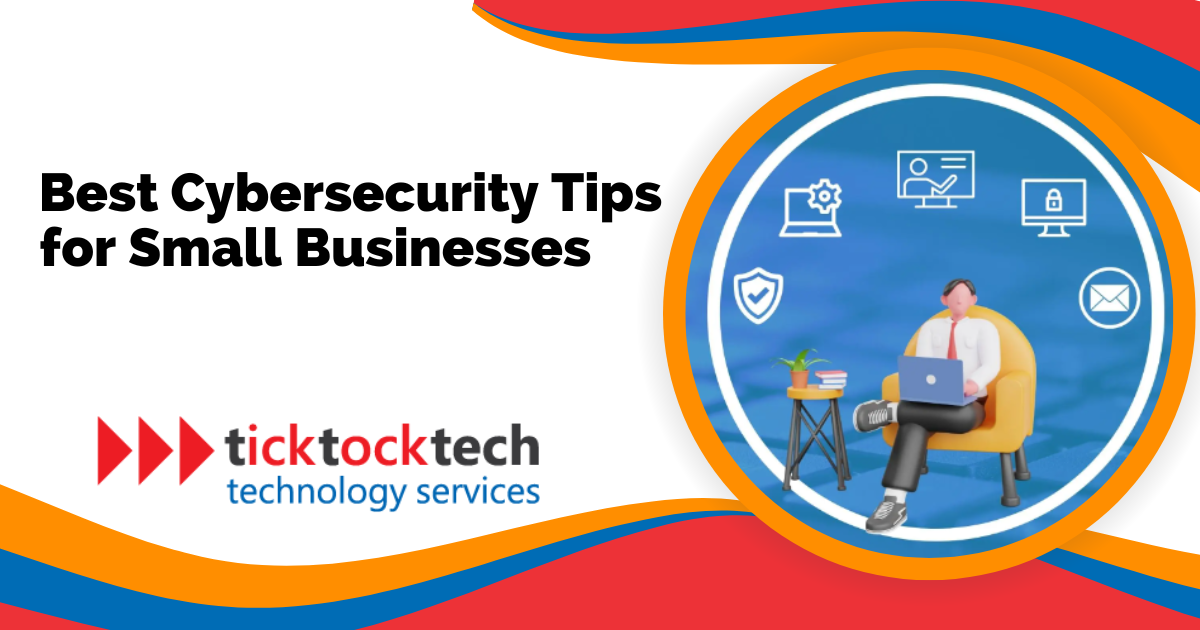Every business, small, medium, or big business has data to protect, both theirs and their customers. Data or information that might be crucial is needed to be protected. Not only money but also data about the business. This also includes protection of platforms used, either for socials, customer relations, and monetary platforms. Attacks on these platforms pose a threat to your finances, and business growth. You might want to think small businesses can’t be targeted, but that’s not true, as all simple details entice dubious people. In reference, all businesses including small and medium need to get on cybersecurity.
Related: How to avoid Internet and Phone Scam in 2023
In fact, due to factors including a lack of funding for cybersecurity measures and the belief that they may have weaker security defenses than larger organizations, small businesses are frequently targeted by cybercriminals. Small firms that are targeted by cyberattacks may suffer serious repercussions, including financial loss, reputational harm, operational interruption, and a decline in customer confidence. There are many ways these attacks can come in, and yes, they are avoidable. Let’s have a look at them.
5 Common Cyber-Attacks that affect small businesses.
There are many types and various ways small businesses can be compromised in this computer age. The most common 5 of them in 2023 include Malware infections, Ransomware attacks, Social Engineering, Phishing attacks, and DDOS attacks.

1. Malware Infections
Malware is a term used to describe malicious software that is intended to interfere with, harm, or allow unauthorized access to computer networks or systems. Small businesses are susceptible to a variety of malware, such as spyware, Trojans, worms, ransomware, and viruses. These malicious software packages can infiltrate a company’s network via email attachments, compromised websites, or portable storage devices.
Related: Most Common 8 Malware in 2023
It can take over a system and steal, corrupt, or delete data. Small businesses are particularly susceptible to malware assaults because they frequently lack the funding for cybersecurity investments. For small organizations, malware infestations can result in major financial losses, data breaches, operational hiccups, and reputational damage.
2. Ransomware attacks.
A form of malicious software called ransomware encrypts a victim’s data and prevents access to them unless the attacker receives a ransom payment. These attacks frequently take place via phishing emails, dangerous attachments, or vulnerable websites. After infecting a system, the ransomware quickly spreads and encrypts crucial files, seriously disrupting business operations. The attackers then ask for a ransom, typically in cryptocurrency, in return for decrypting the contents.
See Also: 7 Best Malware Scanners in 2023
3. Manipulative Access
These strategies try to get around technological security measures and gain unauthorized access to a company’s systems or data by taking advantage of human weaknesses. To deceive employees into giving sensitive information or doing activities that undermine security, cyber attackers may use strategies like impersonation, pretexting, or baiting. This may involve pretending to be a reliable coworker or service provider to trick a worker into disclosing private information or allowing unlawful access.

4. Phishing attacks
Phishing is a popular method of cyberattack in which attackers trick victims into divulging sensitive data, such as usernames, passwords, or financial information. These attacks frequently take place through misleading emails, texts, or bogus websites that imitate trustworthy sources like banks, social media sites, or online businesses. Once they have sensitive information, the attackers can use it for a variety of nefarious activities, such as identity theft, unlawful access, or financial fraud.
Related: Phishing and Crypto Scam
5. DDOS Attacks
Attacks known as distributed denial of service (DDoS) attempt to take down a target system or network by saturating it with a large amount of data coming from numerous sources. These attacks prevent a website, program, or online service from operating normally by overtaxing the server’s resources and blocking reputable users from accessing it. Attackers may plan these attacks using botnets, which are networks of infected computers. Attackers can increase their influence and produce large volumes of traffic by taking advantage of weaknesses in the target’s network.
10 Tips on the best way for Small Business Cybersecurity
DDoS and other attacks, which can cause large financial losses, reputational damage, and client unhappiness, are not immune to most small businesses. Here are 10 action steps to take for your small business cybersecurity.

1. Utilizing Reliable Security software
Small businesses should spend money on reputable antivirus and anti-malware programs that offer a strong defense against new threats. To take advantage of the most recent threat intelligence and guarantee thorough defense against malware, viruses, and other harmful programs, keep the security software frequently updated. Norton Antivirus, McAfee Total Protection, and Bitdefender GravityZone Business Security are all excellent examples of security software.
Related: Tips to Prevent and Avoid Computer virus in 2023
2. Develop emergency Response Tactics
Do not wait till happens before knowing what to do, put it as part of business policy to take this seriously. Make a thorough plan for an incident response that outlines the steps to take in the case of a cybersecurity problem. To evaluate and improve the efficacy of the strategy, clearly define roles and responsibilities, create effective communication channels, and run regular exercises and simulations.
3. Implement a Data Backup Strategy
Small businesses must implement a data backup strategy if they want to safeguard their sensitive data. It entails routinely making copies of crucial data and putting them in safe places. Having backups guarantees that business operations can rapidly continue and data may be restored in the event of data loss due to cyberattacks or other catastrophes. To enhance the efficiency of the data restoration procedure, it is crucial to set up a backup plan, select trustworthy storage options, and verify it frequently. Here is an additional tip for the Data backup process.
- Select a backup strategy, such as using a remote server like Google Disk, Dropbox, or iCloud, or a local device like an external hard disk, USB drive, or CD/DVD.
- To create a backup, delete the data. This can include client information, business records, presentations, spreadsheets, or other crucial documents.
- Decide how frequently you want to back up your data and create a backup schedule. potentially daily, weekly, or monthly. Small firms may choose weekly backups, depending on their company entries.
- You can then back up your data using that. Make sure your backups are kept in a secure location, like a bank safety deposit box or a fireproof safe.
- After backing up, test your backups regularly. Make sure that you can restore your backups correctly by testing them regularly.
- If you are backing up sensitive data, such as financial information or medical records, you should encrypt your backups. This will help to protect your data from unauthorized access.
4. Deploy Firewalls and Intrusion Detection
Small organizations must have firewalls and intrusion detection systems (IDS) to protect their networks from unwanted access and destructive activity. To block suspicious or destructive data packets, firewalls monitor incoming and outgoing traffic to operate as a barrier between internal networks and outside threats. IDS, on the other hand, examines patterns of network traffic to find potential intrusions or anomalies. You can get this done using the following steps;
- Choose a suitable firewall solution (Firewall solutions like pfSense, Sophos Firewall, WatchGuard Network Security, FortiGate, Check Point Next Generation Firewalls (NGFWs), and Avast)
- Configure firewall rules to regulate network traffic.
- Keep firewall firmware up to date.
- Deploy an intrusion detection system (IDS).
- Fine-tune IDS settings and alerts.
- Monitor and analyze firewall and IDS logs.
- Consider outsourcing to a managed security service provider (MSSP).

5. Educate Employees
As a business owner, you should hold thorough cybersecurity awareness training sessions to give staff members the knowledge and abilities they need to identify and respond to possible threats including phishing scams, social engineering tricks, and suspicious attachments. Encourage staff to report any unusual activity right away and cultivate a culture of cybersecurity awareness.
6. Strong Password Security and Documented Changes
Encourage frequent password changes and forbid the use of previous passwords in addition to requiring complex and distinctive passwords. Inform employees of the dangers of using weak passwords and the necessity of keeping them safe. To develop and keep strong passwords securely, think about employing password management software.
7. Implement Access Control
restrict user access to sensitive systems and data to those who need to know. Establish user roles and privileges, and periodically evaluate and revoke access for people who have left their jobs or who no longer need it. Use robust encryption to safeguard the data that is stored.
For critical systems and data, use strong authentication methods like biometrics or smart cards. Make sure that employees only have access to the resources required for their responsibilities by using role-based access restrictions. Review permissions and access rights frequently to avoid unwanted access.
8. Keep Software Updated
Update and patch all software frequently to ensure it has the most recent security updates and bug patches, including operating systems, programs, and security tools. To speed up the process, enable automatic updates whenever possible. Maintain the most recent versions of your antivirus and anti-malware programs. regularly check systems for vulnerabilities, and immediately apply updates
9. Secure Wi-Fi Networks
Wi-Fi Protected Access (WPA2 or WPA3) encryption is secure, and the Wi-Fi network password should be changed frequently. Change the default router login credentials and disable guest networks. Monitor and record Wi-Fi network activity regularly to look for any unwanted access attempts. Wi-Fi Protected Setup (WPS) should be disabled since threats may exploit it. For safe remote access, you might also think about setting up a virtual private network (VPN).
10. Monitor and Analyze Logs
To do this, Review and examine system logs regularly to look for any unusual behavior or indications of possible security breaches. To centralize and automate log analysis for more effective monitoring, use log management systems (Logstash, Graylog, Sumo Logic, Loggly, SolarWinds, and Splunk).
Centralize and analyze logs from disparate systems, by implementing a Security Information and Event Management (SIEM) system. Keep an eye out for any unusual activity or other signs of compromise in the network traffic, user activities, and system logs. To efficiently deal with security incidents, establish incident response processes.
FAQs Best Cybersecurity Tips for Small Businesses.
Malware, phishing, data breaches, and ransomware are the most common cybersecurity threats facing small businesses in 2023.
Small businesses can protect themselves from cybersecurity threats by installing antivirus software, using strong passwords, educating employees about cybersecurity, backing up data regularly, using a firewall, keeping software up to date, being careful about what information they share online, and not clicking on links in emails or text messages from unknown senders.
The consequences of a cybersecurity breach for a small business can be financial losses, damage to reputation, loss of customers, and government fines.
Small businesses can get help with cybersecurity from the Cybersecurity and Infrastructure Security Agency (CISA), the Small Business Administration (SBA), and private companies that offer cybersecurity services.
Conclusions
In conclusion, implementing robust cybersecurity measures is essential for small businesses to protect their sensitive data and digital assets from cyber threats. By following key practices such as developing strong password policies, keeping software updated, securing Wi-Fi networks, implementing access controls, educating employees, and monitoring and analyzing logs, businesses can significantly enhance their security posture. It is crucial to remain vigilant, stay informed about emerging threats, and adapt security measures accordingly to mitigate risks effectively. Prioritizing cybersecurity not only safeguards the business but also helps build trust with customers and partners, ensuring long-term success in the digital landscape.

